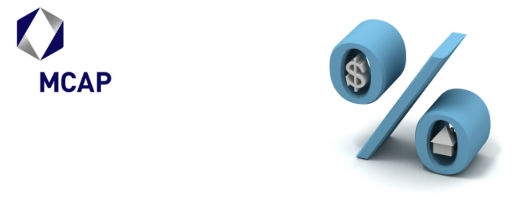Starting two weeks ago and for one more week after today’s post, our regularly-scheduled Mortgage Monday blog posts are featuring a 4-part series courtesy of MCAP on how and why mortgages are priced the way they are (starting with Part 1 two weeks ago: The Bond Market and Fixed Income Yields – How Does it Really Work?, followed by Part 2 last week: Risk? What Risk? Mortgage Investment From the “Buy Side”). If you have some basic financial knowledge, it shouldn’t be overly complex (that being said, these posts aren’t for beginners, either). Either way, if you have any questions, ask them in the comments below and I’ll do my best to answer them.
Part 3 – Fixed Rate Mortgage Pricing – Getting Ahead of the Curve
Given the three risks associated with mortgages (Credit Risk, Reinvestment Risk and Liquidity Risk), compared to government bonds, what premium or spread above bond yields do investors require? Looking at the popular 5 year term, over the past 10 years, the spread between the 5 year mortgage rate (not the posted rate but the “real” rate) and 5 year government bonds has usually ranged between 100 and 250 basis points or between 1 and 2.5 per cent. Competitive pressures and the desire for market share on the part of some lenders at certain critical times of the year (such as the spring market) can sometimes reduce the spread to below 1 per cent. Conversely, economic uncertainty (such as during the second half of 2008) and the desire on the part of lenders to enhance profitability can stretch the spread towards 3% from time to time. On average, think of the fixed rate spread as being in the range of 150 – 200 basis points or 1.5 to 2 per cent. For the past couple of months, the 5 year Canada bond yield was has been around 1.5 per cent and the average 5 year fixed mortgage rate was around 3.5%, resulting in a spread of about 2%.
Yields in the government bond market are easy to follow. Although yields change second by second when markets are open, checking the 5 year government of Canada bond yield once every business day will connect you to the pulse of the market enough to get a sense of the trends which could result in changes to mortgage rates. If bond prices fall, bond yields rise and spreads are reduced. Increases in mortgage rates are introduced to restore spreads. If bond prices rise, yields fall and spreads increase. This can tempt some lenders to lower mortgage rates to gain short term market share. Usually, the others follow.
We have always heard that fixed rate mortgage pricing is closely tied to the bond market. Now we know how and we also know why. Mortgage originators add value through knowledge, expertise and service. An originator who follows the bond market, can explain to a consumer its relationship to fixed mortgage rates and can foresee possible mortgage rate changes will add to their body of knowledge and can therefore further add value to consumers.
What about variable rate mortgages? The factors which influence their pricing are very different from those which influence fixed rates. Some of these factors are well known like the Bank of Canada’s meeting in a couple of weeks – but what is really going on with the large swings we have seen recently in variable rate mortgage pricing compared to the Prime rate? Find out next Monday as we tackle that issue in the next Mortgage Monday blog post.
